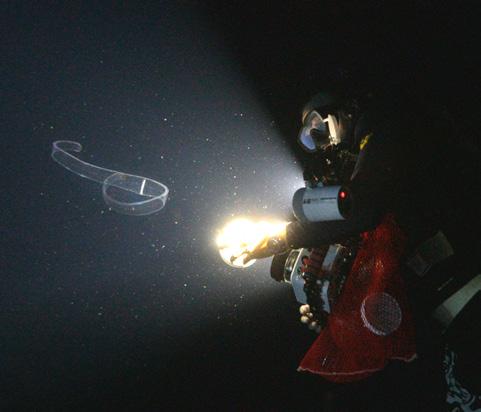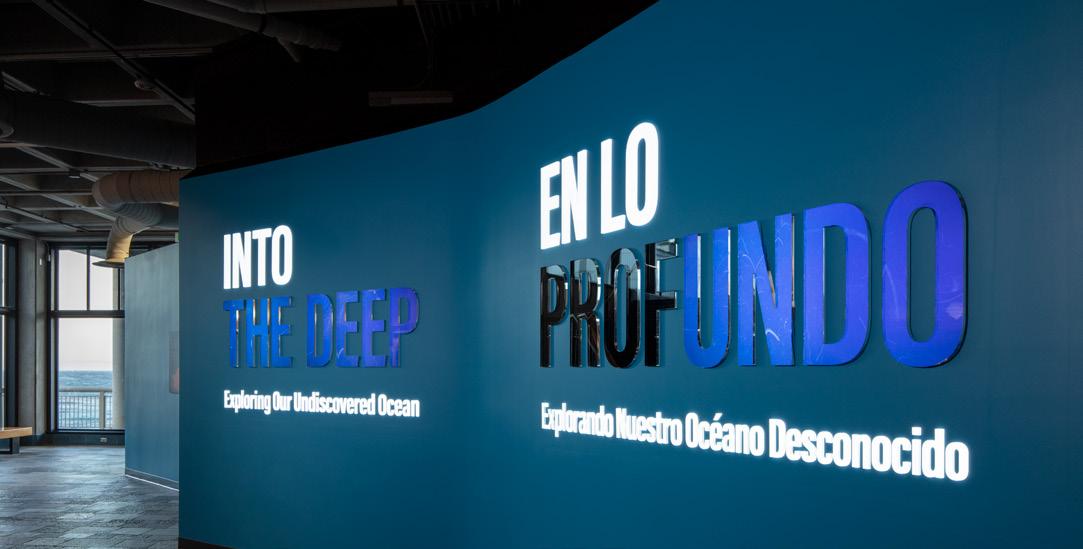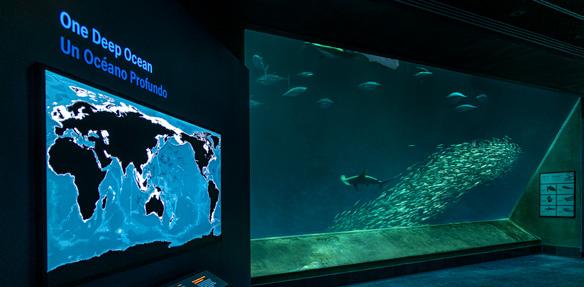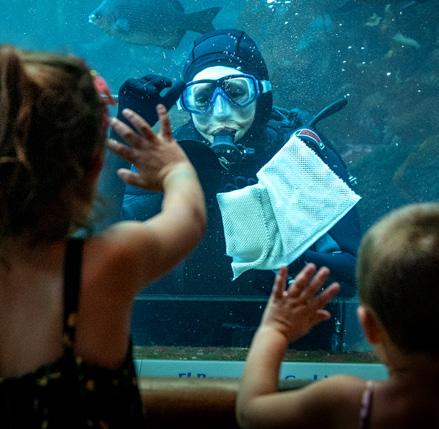
5 minute read
Engineering feats keep the Aquarium first class
With the Aquarium nearing its 40th anniversary, we’ve begun tackling some important infrastructure improvements. Working with talented engineering and design firms, we replaced rockwork in the Kelp Forest exhibit and began replacing the original supports for the Aquarium’s two seawater intake pipes. Both have been affected by water motion, seawater corrosion, and general aging over four decades.
Our signature Kelp Forest exhibit now has new rockwork that we installed without having to remove animals or seawater. To make way for the new, lighter rockwork, divers removed nearly 20 tons of the old material. For the first time since 1984, you’ll now be able to watch algae and invertebrates colonize the bare surface.
Two 1,000-foot-long intake pipes that reach out into Monterey Bay carry 2,000 gallons of seawater a minute to the Aquarium, allowing us to sustain our living exhibits. During a three-year project — which goes on hold during stormy weather — we’re replacing the original concrete and iron supports with a stainless steel alloy that resists seawater corrosion.
Using special technology, two divers spend up to eight hours a day underwater to do this critical work. The updated materials also mean we’ll leave a smaller footprint on the floor of Monterey Bay. The stronger but smaller new supports will be spaced farther apart than the ones they replace.
Both projects are part of the many infrastructure upgrades we’re making to ensure the Aquarium remains a preeminent institution far into the future.
Translation helps accessibility

Into the Deep/En lo Profundo is our first fully bilingual exhibit — in Spanish and English — for both in-person and online visitors. This helps ensure we’re accessible to an increasingly diverse audience — and can help families connect across generations around our exhibits and ocean conservation message.
In 2022 we created a new team that’s responsible for consistent translation of our written materials, using a shared glossary to document precisely how Spanish names and frequently used words and phrases should be translated. It’s no simple task. Over the past 20 years, we’ve learned a lot about adapting descriptive language in ways that take into consideration overall meaning, voice, and tone. For common animal names, we also need validation by the scientific community.

Offering guests and students bilingual content ensures that language is a portal to understanding and connecting to the ocean — and not a barrier.
Volunteers expand our reach
The Aquarium is fortunate to have a highly dedicated group of people who offer their energy, expertise, and enthusiasm as volunteers. They’ve been a foundation of our success since before we opened our doors.
For our volunteer guides, this includes spending hours learning about “all things ocean” so they can share a wealth of knowledge, and countless stories, with our guests. Volunteers also bring their skills as divers to help keep our exhibits in tip-top shape, as educators who support our work with young people, and as biologists and conservationists who assist our research initiatives and Seafood Watch program.

Last year, a group of volunteers helped our partners at MBARI (Monterey Bay Aquarium Research Institute) on a National Science Foundation-funded project. They analyzed hundreds of hours of videos and images of ocean life with a goal of training computers to make correct identifications of what are now unlabeled images of ocean animals. The project will give scientists access to a treasure trove of biodiversity information that until now has been trapped in these recordings.
As we work to create an Aquarium that embraces diversity, equity, inclusion, and accessibility, we welcomed the most diverse group of volunteers ever in terms of age, ethnicity, race, and background. We also recruited our first group of volunteers on the autism spectrum. We’re thrilled to be breaking through generational, cultural, and accessibility boundaries to create a space where more people feel encouraged and welcome to make a difference as they share their passion for the ocean.
Recognition for excellence and innovation
Julie Packard received three awards in 2022 that recognize her longstanding leadership in transforming aquariums into champions for ocean conservation. The Association of Zoos and Aquariums (AZA) presented Julie with the R. Marlin Perkins Award — its highest honor for professional excellence. The Garden Club of America awarded her the Margaret Douglas Medal, recognizing Julie for notable service in conservation education. And she was named the first Visionary Innovator by California State University, Monterey Bay.
AZA also presented its inaugural 2022 Facility Award to the Bechtel Family Center for Ocean Education and Leadership for excellence in design and construction. And a team of AZA inspectors gave the Aquarium a perfect evaluation as part of our re-accreditation process. During their onsite visit they remarked on the cleanliness of the Aquarium — both in public areas and behind the scenes — our engaging and knowledgeable staff, our innovations in life-support design, animal husbandry, and exhibits, and the impact we’ve had on our many audiences. In short, they were blown away!










